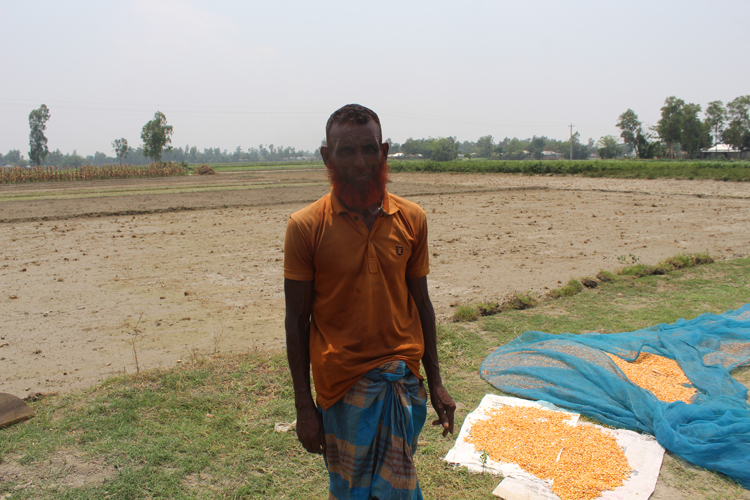
Rafiqul Islam
JAMALPUR, July 13, 2022 (BSS) – Char people become risk averse crop producers as they choose to live in char areas for better livelihoods despite high exposure to risk from extreme climate events, including floods.
Their risky choice of living in char areas has been prompted by the high hope of gaining more return from the farm produces.
The life of the people living in the chars of Brahmanputra River is being hit hard by floods every year, but they love to live in the climate vulnerable areas due to bumper production of crops on the fertile land.
“There is no shortage of crops in the chars as 13 crops are being produced here in 12 months (a year),” said Mahmuda Begum, a char dweller of Damudurpur in Jamalpur.
She said the char dwellers do not want to leave their homes amid floods as they can produce more crops on the fertile land of chars during the dry season.
The char people are highly vulnerable to extreme climate events, including flood, as their homesteads see regular inundation even during a normal flood.
The livelihoods of the char residents are very sensitive to flooding as they depend on agriculture and agriculture labour.
The flood causes havoc on the life of the poor and vulnerable char dwellers every year but it brings good luck for them too. When the floodwater comes from the upstream areas, it carries a huge amount of sediment and those falls on the char land, increasing its fertility.
Farmers cultivate various crop varieties – paddy, maize, jute, potato, tomato and other vegetables - on the char lands and see high crop production due to the fertile soil of the chars.
“When we see the bumper production of crops, we forget the miseries we face every year during the monsoon,” said Sufia Begum, another char dweller and mother of four.
Mozammel Haque, a farmer of Char Dawlatpur at Sarisabari upazila in Jamalpur, said he lost his homes four times in his life due to riverbank erosion but he still loves to live in chars owing to high crop yielding there.
“Though we have to face acute sufferings during the monsoon, we find favorable condition to produce crops during the dry season, which makes us happy,” he said.
If a farmer sows seeds of a crop, it will give him or her high yielding, Mozammel said, adding “More crop, more delight”.
Raising Homestead Plinths
The people living in Brahmaputra’s chars generally apply the traditional practice of increasing homestead plinths to cope with monsoon floods. The relatively well-off families increase their homestead plinths with their own costs but the poor families have no financial capacity to raise their homestead plinths, which makes them more vulnerable to flooding.
But, Eamily Begum, 50, was lucky enough as she increased her homestead plinth last year with the support from a project of Palli Karma-Sahayak Foundation (PKSF), an apex development organisation established by the Bangladesh government in 1990.
“Once we were hit hard by floods in the past and we had to face untold sufferings as we had no way to stay home during a flood,” said Eamily of Char Shovagacha of Madarganj.
She said during floods in the past, they along with their all belongings and domestic animals had to go to a shelter centre located one kilimetre away from her home but after increasing the homestead plinths, they are now relatively safe from flooding.
Pogidur Rahman, coordinator of the PKSP Extended Community Climate Project-Flood (ECCCP-Flood), said the project is providing financial support to the flood victims for building climate-resilient houses on the raised plinths but the support is not enough as there are a huge number of poor families living in the chars.
He said about 878 homestead plinths have already raised so that the char people can protect their homesteads and properties from floods.
The project is also providing support for livelihood, safe drinking water and sanitation for the flood victims.
“In the past, our tube-well and latrines were inundated during the floods, worsening our drinking water and sanitation crisis. Now we have installed tube-wells and latrines on the raised plinth. We hope we will not face any drinking water and sanitation crisis during any flood in the future,” said Afroza Begum of Char Nadaghari at Madarganj.